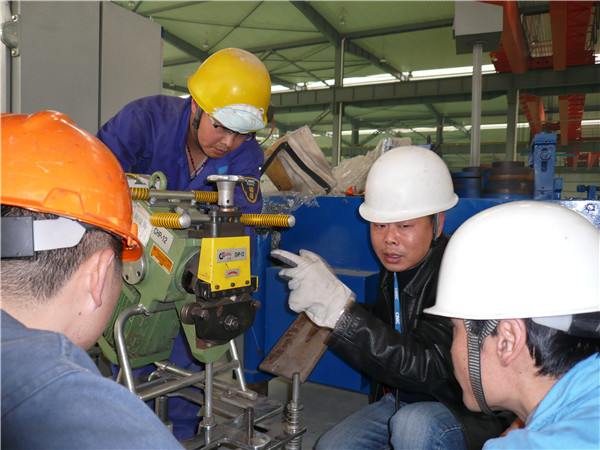It has seven manufacturing plants in Asia and Europe and it plans to build more factories in emerging markets to secure more market share.
 “The most obvious opportunity is the modernization of beverage and the food supply chain. That is a big area and there are lots of investments going on there,” said Roed. “The demand for beer, milk, yogurt, juice and soft drinks will also provide all sorts of opportunities for equipment and ingredient businesses. We have seen lots of potential in this sector, not only in China, but in many dynamic emerging economies.”
“The most obvious opportunity is the modernization of beverage and the food supply chain. That is a big area and there are lots of investments going on there,” said Roed. “The demand for beer, milk, yogurt, juice and soft drinks will also provide all sorts of opportunities for equipment and ingredient businesses. We have seen lots of potential in this sector, not only in China, but in many dynamic emerging economies.”
Ziemann Holvrieka’s factory in Nantong earned more than 100 million yuan ($15.34 million) in overseas markets by supplying beer-making equipment and plant development projects in 2015, up 10 percent year-on-year.
As China is upgrading its manufacturing, the domestic beer segment will inevitably enter an era of saturation where market conditions will be tough, Roed said.
Owing to sluggish market conditions, Carlsberg, the world’s fourth-largest beer brewer, plans to close factories in East China before 2018, including some of the assets it acquired from Chongqing Beer (Group) Co Ltd in Anhui and Zhejiang provinces.
So, the ASEAN region and South America will be key to Ziemann Holvrieka as it increases its investment in marketing and resource integration over the next five years, Roed said.
“The great challenge is keeping supply and demand in balance in new markets. I am confident that the balance of supply and demand will be met in markets such as Vietnam and Brazil in the future,” Roed said. “Technology and prompt after-sales service are going to be key.”
In addition to overseas market expansion, Ziemann Holvrieka is working with its key customers in various countries to deliver innovation in areas such as nutrition, new restaurant menus and risk-management solutions. These innovations will help bring increased product and menu diversity, while ensuring a sustainable source of beverage and food products at a fair value.
Beer consumption is analyzed in terms of outdoor and indoor drinking. Indoor consumption is mostly of medium and high-end products. Outdoor consumption accounts for medium and low-end products, consumed at street vendors and night meal providers. Outdoor businesses are easily affected by weather.
Ding Lixin, a researcher at the Chinese Academy of Agricultural Sciences in Beijing, said it is reasonable for domestic beer and beverage equipment suppliers to seek more market growth points from emerging markets to retain stable growth. For, markets in the ASEAN region, Brazil, Nigeria are not easily affected by cold weather conditions because of their geographic locations.
“Ziemann Holvrieka’s equipment and EPC project business, and growing demand for beer and beverage products in emerging markets, have brought more choices to consumers to choose local beer or drink brands, as they have better and more options to pick products that they think are cheaper, safer and better in taste, instead of only selecting beer products from developed markets,” Ding said.

